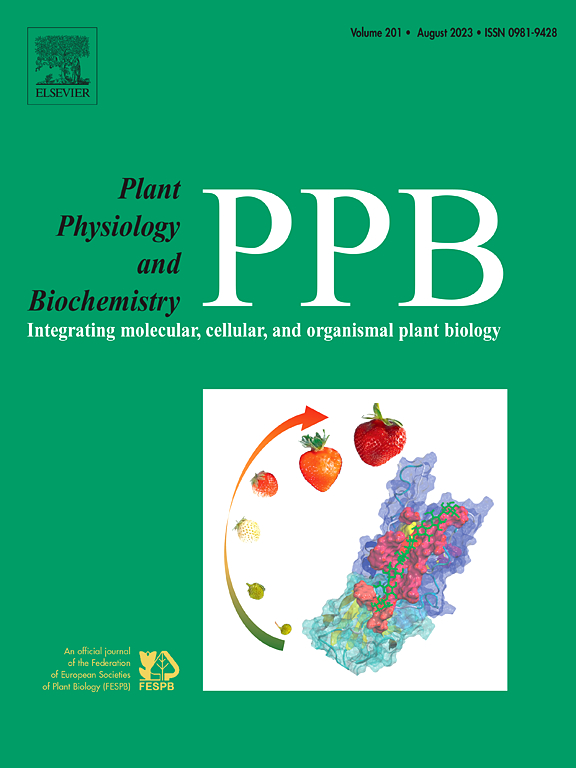Spatially resolved localization of Cd and Mn and their interactions in the Cd/Mn hyperaccumulator Celosia argentea Linn
IF 6.1
2区 生物学
Q1 PLANT SCIENCES
引用次数: 0
Abstract
Celosia argentea Linn. has recently been identified as a hyperaccumulator of both manganese (Mn) and cadmium (Cd). However, the mechanisms by which C. argentea tolerates Mn and Cd toxicity remain unclear. In this study, the spatial distribution of Mn and Cd and their interactions were analyzed using X-ray microfluorescence and the Leadmium Green fluorescent probe. Mn was predominantly localized along the leaf margins, particularly at the apex, whereas in the stem and root, it primarily accumulated in epidermal tissues. The distribution patterns of Mn and calcium (Ca) in C. argentea were inversely correlated, whereas Mn and iron exhibited similar trends. Cd was mainly localized in the leaf veins, vascular bundles at the stem periphery, and vascular cylinders in the roots. Exogenous Mn addition significantly enhanced the fluorescence intensity of Cd in the leaves. Following Mn addition, Cd was detected in the mesophyll tissues and both the upper and lower epidermis, in addition to the leaf veins. Interestingly, exogenous Cd addition changed the distribution pattern of Ca in the leaves of C. argentea. These findings provide novel insights into the mechanisms underlying plant tolerance to Mn and Cd toxicities and help improve the phytoextraction efficiency of Mn and Cd co-contaminated soil.

求助全文
约1分钟内获得全文
求助全文
来源期刊
CiteScore
11.10
自引率
3.10%
发文量
410
审稿时长
33 days
期刊介绍:
Plant Physiology and Biochemistry publishes original theoretical, experimental and technical contributions in the various fields of plant physiology (biochemistry, physiology, structure, genetics, plant-microbe interactions, etc.) at diverse levels of integration (molecular, subcellular, cellular, organ, whole plant, environmental). Opinions expressed in the journal are the sole responsibility of the authors and publication does not imply the editors'' agreement.
Manuscripts describing molecular-genetic and/or gene expression data that are not integrated with biochemical analysis and/or actual measurements of plant physiological processes are not suitable for PPB. Also "Omics" studies (transcriptomics, proteomics, metabolomics, etc.) reporting descriptive analysis without an element of functional validation assays, will not be considered. Similarly, applied agronomic or phytochemical studies that generate no new, fundamental insights in plant physiological and/or biochemical processes are not suitable for publication in PPB.
Plant Physiology and Biochemistry publishes several types of articles: Reviews, Papers and Short Papers. Articles for Reviews are either invited by the editor or proposed by the authors for the editor''s prior agreement. Reviews should not exceed 40 typewritten pages and Short Papers no more than approximately 8 typewritten pages. The fundamental character of Plant Physiology and Biochemistry remains that of a journal for original results.

 求助内容:
求助内容: 应助结果提醒方式:
应助结果提醒方式:


